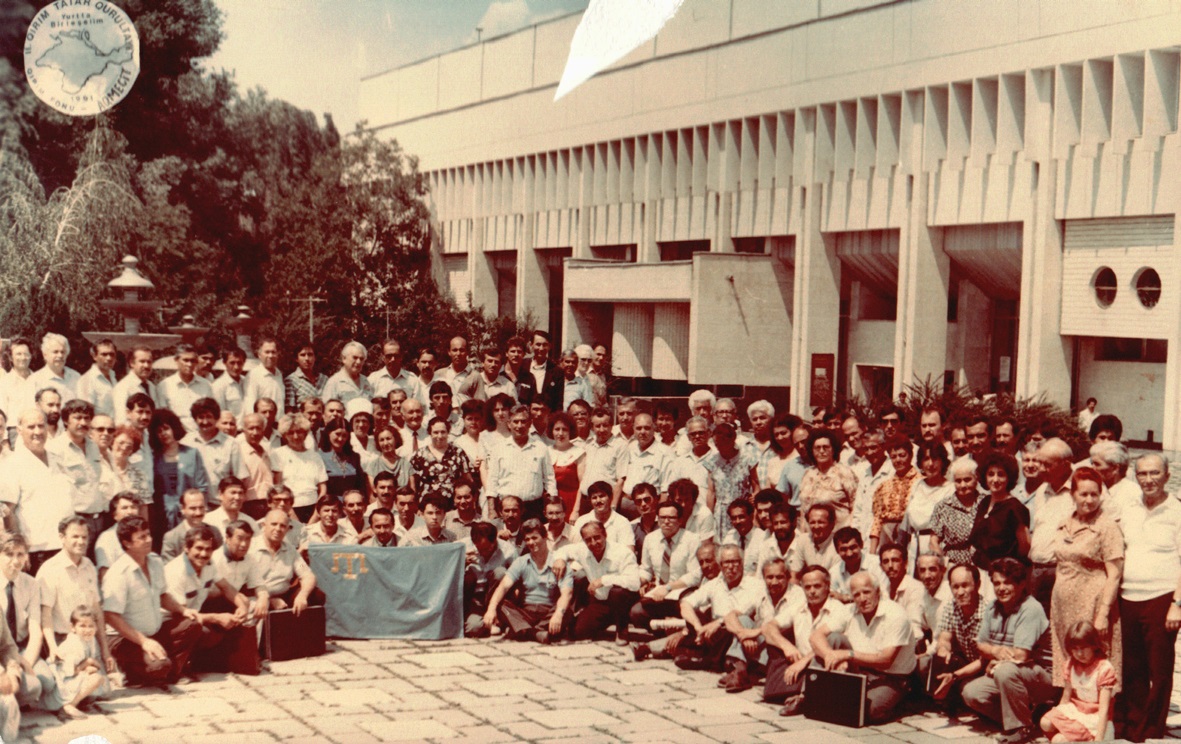Orta Jami Mosque Opening Ceremony Takes Place in Bakhchisaray

On August 16, 2013, the opening ceremony of Orta Jami mosque was held. The mosque was closed around 95 years ago.
The monument of the 18th century was opened after the restoration work, made at the private expenses of Umerovs family – father – hajju Enver aga Umerov and his sons, hajji Aslan and hajju Rustem headed by Mufti of Muslims of Crimea hajji Emirali Ablaev.
Mustafa Jemilev, Chairman of the Mejlis of the Crimean Tatar People, hajji Emirali Ablaev, Mufti of Muslims of Crimea, Mr Refat Chubarov, First Vice Chairman of the Mejlis, President of the World Congress of Crimean Tatars, Mr A. Chiygoz, Head of Bakhchisaray Regional Mejlis, Enver-aga, head of Umerovs family, Mr Aslan Omer Qirimli – his elder son who chairs the Association of the Crimean Tatars in Kyiv, Mr Ilmi Umerov, Head of Bakhchisaray Regional State Administration, Mr Constantin Rubanenko, mayor of Bakhchisaray, as well as the veterans of the Crimean Tatar national movement, representatives of the Crimean Tatar NGOs, local residents and guests from Turkey, Romania and a range of Ukrainian cities took part in the opening ceremony of the monument.
According to the Mejlis Head Mustafa Jemilev, the opening of the reconstructed mosque Orta Jami in Bakhchisaray is a landmark event not only for Crimea and Ukraine, but for the Turkic world and Muslims of Europe in the whole.
“Since Russia annexed Crimea and after en mass deportation of the Crimean Tatar people from their historical land almost all monuments of history and culture of our people were destroyed perfidiously, including cemeteries. However, today the Crimean Tatars returned to their homeland and restore their cultural, historical and religious heritage”,- M.Jemilev said.

The Mejlis Head thanked hajji Enver Umerov for wise and true upbringing of his sons – Aslan and Rustem who reconstructed one of the most ancient monuments of their people.
Mustafa Jemilev also expressed his hope that the time will come when Crimea will be splashing in such beautiful mosques like Orta Jami.
On the occasion of the long awaited opening of one of the most ancient mosques in Crimea, the Chairman of the Mejlis gave hajji Enver Umerov the gold plated Koran published in Damask which was presented to him by Al-Sallomi, Mufti of the main mosque of Mecca during his umrah. The Koran will be kept in Orta Jami.
“Such events must unite all Crimean residents and the authorities also have to be always with people,” – Mr Refat Chubarov, First Vice Chairman of the Mejlis, President of the World Congress of Crimean Tatars noted.
According to him one could hardly recall any monument that was reconstructed by the state in Bakhchisaray for the last 10 years. The Crimean Tatars are restoring their heritage alone.
“We have to make the state turning to our monuments like they do it with the monuments that they consider belong to their culture,”- Mr Chubarov said.
Mufti of Muslims of Crimea hajji Emirali Ablaev blessed the opening of the Muslim shrine and gave hajji Enver Umerov Koran and certificate of appreciation.
After the end of the opening ceremony the people made their first Friday praying in Orta Jami after almost 95 years. The Juma namaz was held by Mufti of Muslims of Crimea hajji Emirali Ablaev.
Note:
Orta Jami mosque was built in 1737-1743 by two khan-brothers that hold the Crimean throne in turn.
The eldest of them, Mengli Selimoglu II Giray was famous as the savior of Crimea in difficult times. He organized military resistance to the invasion to the peninsula and the postwar reconstruction of Crimea. In addition to high organizational skills, he was really keen on literature and theology. Khan Mengli was a member of the Sufi order, wrote works and despite the difficult times, donated funds for the construction of mosques.
The younger brother, Selyamet Selimoglu II Giray, hold the throne after the death of Mengli and went down in history as the “Khan – restorer.” He restored the ancient monuments (including Khansaray), and also built new public facilities. Khan Selyamet completed the construction of the Orta Jami started by his older brother.
The researcher of the early twentieth century, Boris Zasipkin, in his essay “The Monuments of Crimean Tatars” 1924 notes that the fashion trends of the time in the architecture developed under the direct influence of the Ottoman empire, which, in turn, was strongly influenced by the “French style”. In particular, the Turkish historian Jalal Essad (whose Russian translation came out in 1919) wrote that the French engineers, designed to Turkey in the years 1730-1754 for hydrographic work brought sculptors, painters and decorators, who introduced the style of Louis XV and the Baroque.” Over time, the Ottoman artists are increasingly approaching the European type of ornament, which came into vogue and is commonly called at the time “a 1a france.”
The art critic MrIbrahim Abdullayev wrote a lot about Bakhchisaray quarter mosques as a cultural phenomenon: “Quarter mosques were real men’s clubs. In terms different from the West, where the municipality has given rise to the town hall, the role of mosques was huge. They embodied the spiritual unity of the members of the urban community; there were approved norms of law and order, moral and aesthetic position of Islam. Every alien, before using the privileges of citizens, had to come to the main mosque and that way to reaffirm their unconditional obedience to all requirements of the local spiritual and temporal power.”
The listAzizov – sacred places, composed by the Spiritual Board of Muslims of Crimea, mentions about Aziz Seit-Mehmet Eren, located next to the Orta Jami.
During the Soviet time themonument and the national shrine Orta Jami were used as a house of culture, cinema, until, finally, building was completely desolated, and the architecture of the original period, now needs to be cleaned off a variety of business extensions of utilitarian character.





